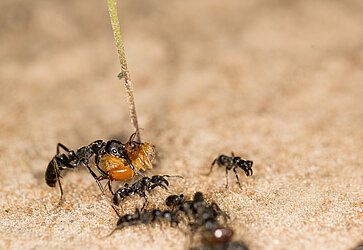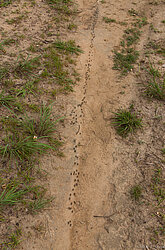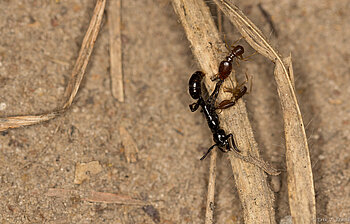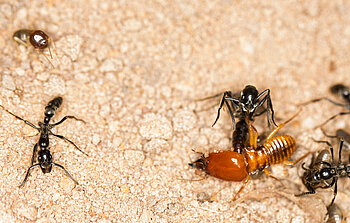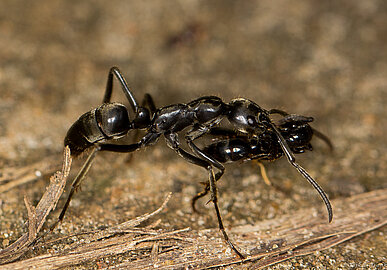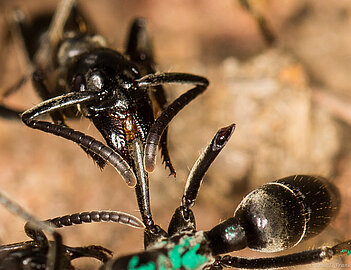African Ants – Paramedics in the Animal Kingdom
Matabele ants (Megaponera analis) are found in sub-Saharan Africa. They are characterised above all by their very specialised hunting behaviour against termites.
After a scout ant finds the termites, it will recruit up to 600 ants to march in column formation to the termites. During the battle, several termites are killed and then transported back to the nest as food. An arms race between ants and termites has led to termites also evolving defence mechanisms. The strong termite soldiers are able to injure and kill several ants. Matabele ants have thus been forced to find a way to compensate for this increased risk of injury.
Rescuing the injured
We have found that injured ants "call" for help after battle with scent from a gland on their head. This smell is detected by the comrades, who then examine the injured ant. The injured ant then pulls its legs together and is carried back to the nest by its comrades. Their injuries (severed legs or clinging termites) make them too slow to keep up with the column on the way back, separating them from the group and making them easy prey for other hunters such as spiders. If the injured ants were forced to return to the nest without help, about a third of them would not survive the return journey.
Treatment and rehabilitation of the injured
In the nest, the injured are treated by their comrades. Clinging termites are removed and ants that have lost a leg are intensively licked on the wound by their comrades. This wound care reduces the mortality rate of the injured by 80% (who would otherwise die from infection). After treatment, the ants can learn to walk with 4 remaining legs almost as fast as healthy ants and are again a productive member of the colony. We could show that one fifth of the ants participating in the hunt have already lost a leg. The injured veterans therefore make up an important part of the colony and thus this helping behaviour, which is unique in the insect kingdom, "pays off" for the entire colony.
Contact & Links

Dr. Erik T. Frank conducted research on the termite-hunting ant species Megaponera analis as part of his PhD from 2014-2018, discovering and describing this behaviour. From 2018-2021 he was Managing Director of the Comoé Research Station. He currently leads a research group on social wound treatment in the animal kingdom.


